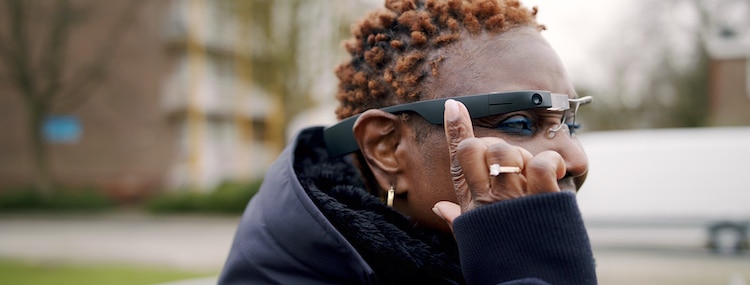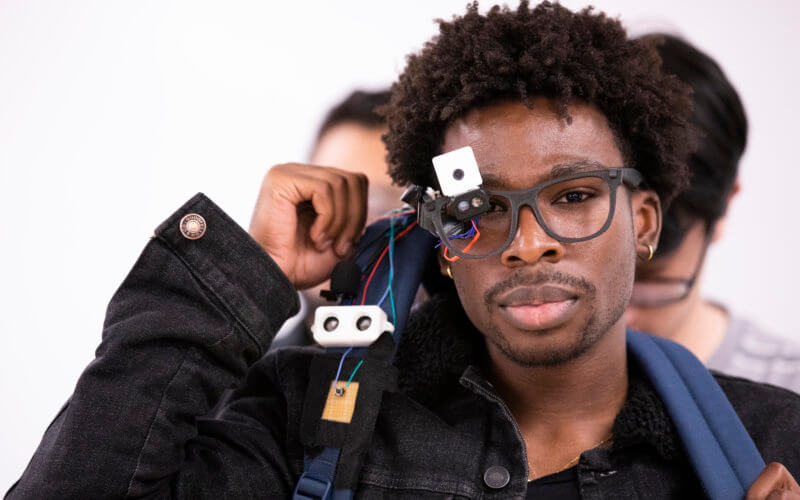Enhancing Access With Assistive Technology for the Blind
The assimilation of assistive modern technology for the blind stands for an essential innovation in ease of access, essentially changing exactly how individuals navigate their environments and engage with culture. As we check out the diverse types of assistive gadgets and their substantial effects on daily living, it ends up being necessary to analyze just how recurring technological innovations are improving the landscape of support for the blind community.
Review of Assistive Technology
Assistive technology describes a series of tools and software application made to enhance the capacities of people with impairments, including those that are visually impaired or blind. This technology plays a vital duty in promoting independence and enhancing the quality of life for customers. By offering different methods for accessing info and performing day-to-day jobs, assistive innovation encourages people to navigate their atmospheres extra successfully.
The development and implementation of assistive modern technology welcome a variety of principles aimed at cultivating accessibility. These principles include user-centered style, which prioritizes the requirements and choices of the individual, and the combination of technology right into daily activities. Such improvements make sure that assistive tools are not only functional yet additionally intuitive and very easy to use.
Additionally, assistive modern technology incorporates a diverse range of solutions, from low-tech alternatives like magnifiers to modern developments such as display visitors and Braille screens. The recurring advancement of this area is driven by the requirement to deal with the special difficulties dealt with by individuals with aesthetic impairments (Wearable technology for low vision). As modern technology proceeds to development, the potential for improving ease of access and advertising inclusivity remains appealing, eventually contributing to a much more fair society

Sorts Of Assistive Gadgets
Numerous kinds of assistive tools are available to sustain people who are visually damaged or blind, each created to deal with specific needs and difficulties. These tools can be broadly categorized right into 3 primary kinds: low-tech, mid-tech, and modern options.
Low-tech tools consist of products such as magnifiers, Braille tags, and responsive maps. These are fairly simple tools that improve the individual's capability to connect with their environment without needing complicated modern technology.
Mid-tech gadgets often include advanced functions, such as electronic magnifiers and portable Braille note-takers. These devices can use functionalities like speech outcome, permitting individuals to accessibility info extra effectively.

Influence On Daily Living
The availability of different assistive tools dramatically improves the high quality of life for individuals that are aesthetically impaired or blind, impacting their everyday living in extensive ways. By incorporating innovations such as display viewers, Braille shows, and audio description solutions right into their regimens, individuals obtain better autonomy and freedom. These tools facilitate access to info, making it possible for individuals to execute day-to-day tasks, such as reading emails, navigating public rooms, and delighting in media material.
Furthermore, assistive devices empower individuals to engage even more fully in social communications and neighborhood activities. The capability to utilize smart devices furnished with accessibility functions allows for smooth interaction and connection with others. This connection cultivates optical doctor a feeling of belonging and decreases sensations of seclusion.
In professional setups, assistive innovation supports performance by allowing people to complete work jobs successfully. Devices like voice recognition software and specialized magnifying tools enable users to participate in the labor force on equal footing with their sighted peers.

Improvements in Technology
Current technical developments have actually significantly changed the landscape of devices available for individuals that are blind or aesthetically impaired. The combination of fabricated intelligence (AI) and device understanding has actually generated applications that boost navigating and object recognition. As an example, smart device applications can currently utilize AI to recognize and define surroundings in real-time, supplying users with valuable contextual details.
In addition, developments in haptic modern technology have brought about the development of clever walking sticks equipped with sensing units that identify barriers and provide tactile feedback. This empowers individuals to navigate their environment with boosted confidence and freedom. Developments in text-to-speech software program and braille displays have improved the access of digital material, allowing for smooth interaction with numerous media.
Wearable modern technologies, such try this site as smart glasses, are also making strides in helping visual impairment. These gadgets can give increased fact experiences, superimposing critical info onto the customer's field of vision. Collectively, these developments not only boost the quality of life for people who are blind yet likewise advertise higher inclusion in society. As technology continues to progress, the potential for even more transformative devices stays on the horizon.
Future Trends and Innovations
As innovation quickly advances, the future of assistive tools for people that are blind holds tremendous promise. Innovations in fabricated knowledge (AI) and equipment discovering are poised to reinvent the way blind customers connect with their environments. AI-driven applications are being developed to boost things recognition, allowing individuals to determine and browse their environments with higher simplicity and precision.
In addition, improvements in haptic feedback technology are allowing the development of responsive maps and navigating help that provide real-time information via touch. These advancements not only boost movement however likewise foster self-reliance. Furthermore, wearable gadgets equipped with increased fact (AR) attributes are emerging, using users visual info via audio descriptions, consequently connecting the gap between the digital and physical worlds.
In addition, the assimilation of smart home innovation provides brand-new chances for ease of access, permitting individuals to regulate their living settings via voice commands or smart device applications. As partnership between technology designers and the blind neighborhood proceeds, the focus on user-centered layout will ensure that future technologies are tailored to meet the unique requirements of this population (Wearable technology for low vision). The trajectory of assistive technology guarantees an extra comprehensive and empowering future for people that are blind
Verdict
To conclude, assistive modern technology plays a crucial role in boosting access for individuals with aesthetic impairments. The varied selection of devices, including screen visitors and wise walking canes, significantly improves daily living and cultivates freedom. Constant improvements in innovation and user-centered style ensure that these tools cater effectively to the unique requirements of the blind community. As developments progress, enhanced inclusivity and empowerment can be prepared for, ultimately improving the lifestyle for those influenced by aesthetic impairments.
The dispensing optician integration of assistive modern technology for the blind stands for an essential innovation in access, fundamentally modifying just how individuals navigate their atmospheres and involve with society.Assistive innovation refers to a variety of tools and software created to improve the capabilities of individuals with disabilities, including those who are blind or visually damaged. Wearable technology for low vision.As technology swiftly progresses, the future of assistive devices for individuals that are blind holds enormous pledge. The trajectory of assistive innovation assures a much more inclusive and empowering future for people that are blind
In conclusion, assistive innovation plays an important role in enhancing availability for people with aesthetic impairments.